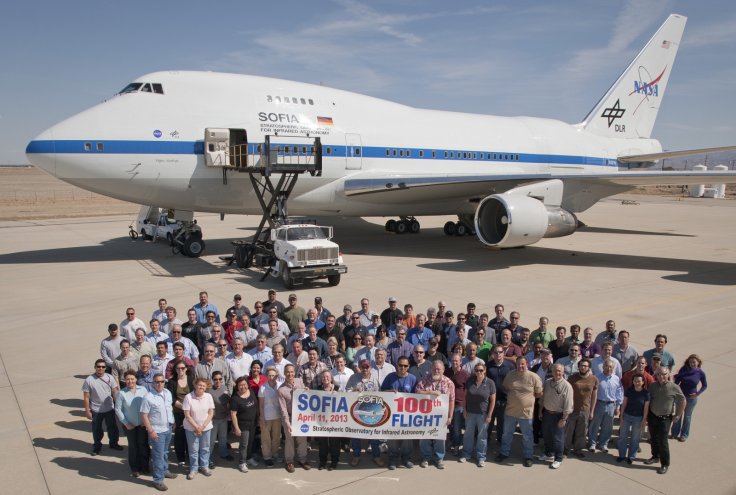
One of the most ambitious projects that NASA is planning this year includes its flying observatory Stratospheric Observatory for Infrared Astronomy or Sofia. The American space agency is prepping up for a campaign in 2018.
Amongst its many tasks Sofia will observe the "celestial magnetic fields, star-forming regions, comets, Saturn's giant moon Titan and more," stated the space agency in its blog post. The 2018 operation will mark the fourth year for Sofia's full-blown operations. As per NASA the scheduled time for this campaign will be "between February 2018 and January 2019."
Sofia is essentially a Boeing 747SP jetliner, which has been customized. It will carry a telescope of 100-inch diameter. The venture is a joint effort by the German Aerospace Centre (DLR) and the American space agency. The forthcoming investigation report, derived from this mission, will help the experts to comprehend "how magnetic fields affect the rate at which interstellar clouds condense to form new stars," believes the NASA scientists.
One of the programmes under this venture will make use of the latest instrument from the observatory, the High-resolution Airborne Wideband Camera-Plus, named HAWC+. It will aid the astronomers in understanding the contributions of the active black holes to the brightest of the faraway galaxies. "These observations will help them learn whether the luminosity of these active black holes is driven by star formation or accretion of material onto the central black hole," stated the report.
Moreover, the flying observatory Sofia will also observe the methane levels in Mars in order to identify how it alters with every changing season.
Also Read: The year in science: Most popular researches of 2017
A comet named 46P/Writanen will come close to Earth and the researchers are also planning to study it. They want to see if they can get any clue about the evolution of our solar system from the ancient times. They would use the dust of the comet, said NASA.
Saturn's largest moon Titan is also there in line. Researchers associated with this operation will use the mobility of the flying observatory to learn more about the gigantic satellite's atmosphere.









